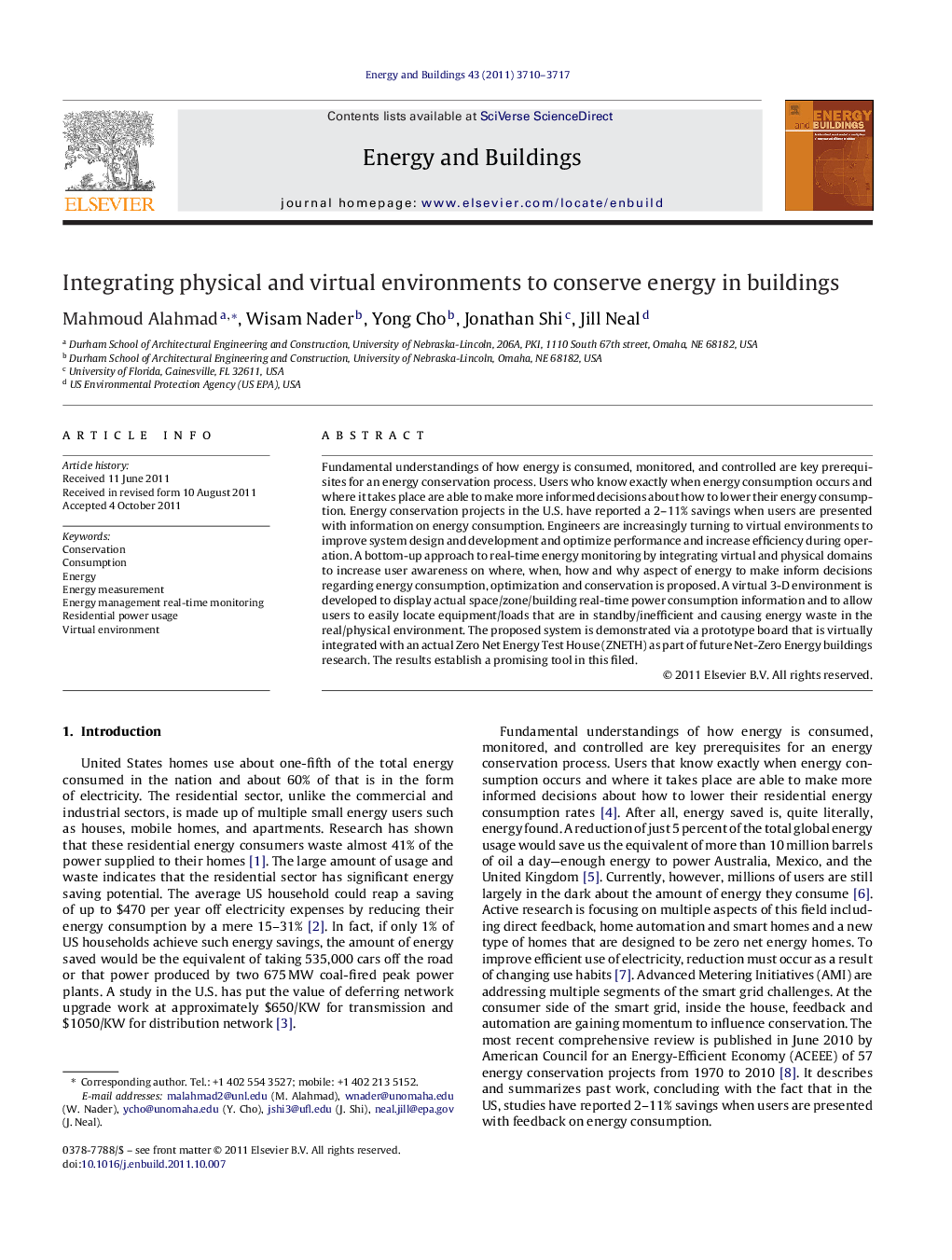| Article ID | Journal | Published Year | Pages | File Type |
|---|---|---|---|---|
| 264239 | Energy and Buildings | 2011 | 8 Pages |
Fundamental understandings of how energy is consumed, monitored, and controlled are key prerequisites for an energy conservation process. Users who know exactly when energy consumption occurs and where it takes place are able to make more informed decisions about how to lower their energy consumption. Energy conservation projects in the U.S. have reported a 2–11% savings when users are presented with information on energy consumption. Engineers are increasingly turning to virtual environments to improve system design and development and optimize performance and increase efficiency during operation. A bottom-up approach to real-time energy monitoring by integrating virtual and physical domains to increase user awareness on where, when, how and why aspect of energy to make inform decisions regarding energy consumption, optimization and conservation is proposed. A virtual 3-D environment is developed to display actual space/zone/building real-time power consumption information and to allow users to easily locate equipment/loads that are in standby/inefficient and causing energy waste in the real/physical environment. The proposed system is demonstrated via a prototype board that is virtually integrated with an actual Zero Net Energy Test House (ZNETH) as part of future Net-Zero Energy buildings research. The results establish a promising tool in this filed.
► Developed a bottom-up approach to real energy monitoring in buildings. ► We integrate virtual and physical energy building models. ► Demonstrate Physical and virtual model using a prototype board.
